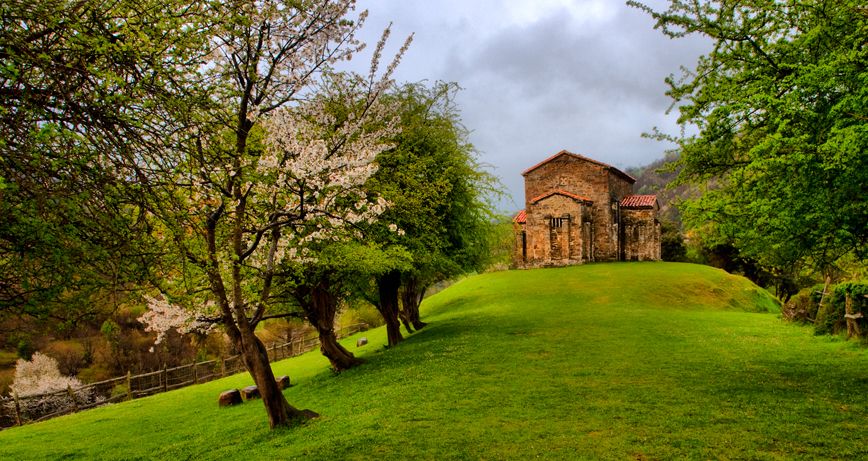Back When the Asturian Pre-Romanesque period captivated Humanity
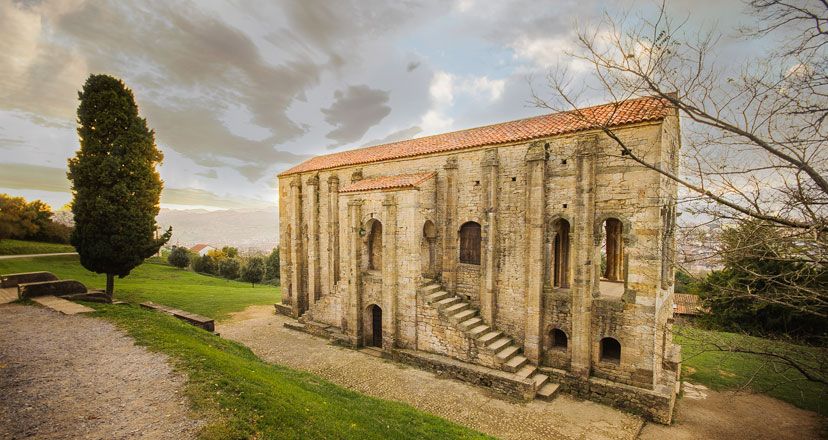
When the Asturian Pre-Romanesque period captivated Humanity
Once upon a time there was a small kingdom perched on high peaks and deep valleys, amidst lush forests and crystal-clear rivers, spread with idyllic villages, where towns and cities were born and grew little by little.
Once upon a time there was a small kingdom perched on high peaks and deep valleys, in the midst of lush forests and crystal-clear rivers, spread over idyllic villages, where towns and cities were born and grew little by little. A green and humid Kingdom, bathed by the sea and by the rain, which in its most Asturian version was called orbayu. It shone with the sun and the intense moonlit nights. A millenary and medieval Kingdom, like in a fairy tale, in which ferns, mosses and lichens were the favourite ornamentation of the xanas, and in which the hórreos (granaries) were a fantastic home for the goblins. A Kingdom that gave birth to Pre-Romanesque Art, also known as Asturian Art.
And with the passing of the centuries and thousands of vicissitudes, the Pre-Romanesque Art began to captivate humanity, until one day this seduction materialised in international recognition: in December 1985, Santa María del Naranco, San Miguel de Lillo and Santa Cristina de Lena were declared World Heritage Sites by UNESCO.
These three constructions were the first, and years later it would be the turn of San Julián de los Prados, the Holy Chamber of Oviedo Cathedral, and the Foncalada fountain.
An ideal occasion to take a look back...
This anniversary is an exceptional occasion to look back on a fascinating journey through time. It is the perfect moment to place yourself in the court of King Ramiro I. The year is 842, in the middle of the 9th century. A mature, warrior king who comes to the throne at a turbulent time.
Imagine an itinerant, cultured and civilised court, a rural society, nature in its purest state... An exciting, emerging world. And in the middle of it all, bursting onto the scene an art and a way of understanding the world that breaks with the previous tradition and does not link up with the next...
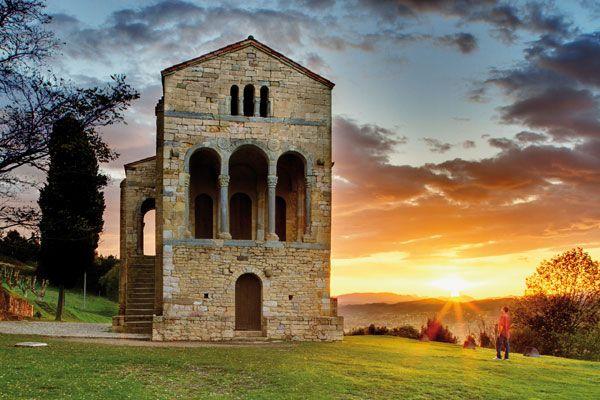
Ramiro I reigned for only a short time, just eight years from 842 to 850, but it was more than enough time to leave a unique heritage, made up of three constructions that constitute a "unicum" and that make up the Ramirense cycle: Santa María del Naranco, San Miguel de Lillo and Santa Cristina de Lena.
These three jewels of the Crown, which would astonish the world in the years and centuries following the life of King Ramiro, have survived for centuries thanks in large part to the fact that they have never lost the function and meaning they had from their origins: that of constructions dedicated to worship.
They have seen time pass with astonishing dignity and are the living testimony that makes this journey through the twists and turns of the Kingdom of Asturias and the Asturian Monarchy possible.
They are the most artistic excuse to take a look at one of the most fascinating chapters in European history, and there they are, as if time had stood still during the reign of Ramiro I, right up to the present day.
Santa María del Naranco, the Parthenon of Pre-Romanesque Art
Imagine the surroundings of Oviedo/Uviéu in the 9th century. A green and beautiful area, with abundant woodland, with native flora and fauna. A luxury for the senses for a warrior king. For a king who, although resident in the capital, occasionally felt comfortable outside the court environment.
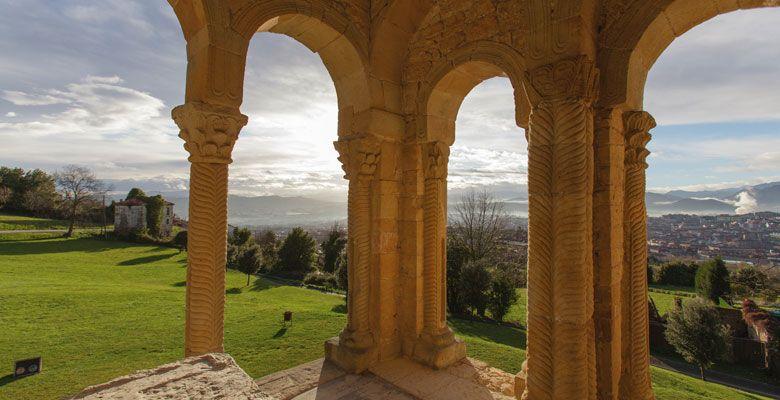
Imagine Santa María del Naranco as the perfect "refuge" from the hustle and bustle, as a temporary residence with the best views in the world. Conceived by a cultured, cosmopolitan, wise and universal mind, this palace, which soon became a church, is the Parthenon of Pre-Romanesque Art and has no equal in all of Europe.
Santa María del Naranco was the first time that the barrel-vaulted vault appeared, supported by transverse arches, which, in turn, rest their weight on columns or pilasters attached to the wall (buttresses). This technique was used for the first time in Spanish architecture and is a clear precedent of Romanesque architecture. With Santa María came innovation, a work unique in the world for posterity.
Even today, Santa María inspires the peace and harmony with which it was conceived. It is a meeting point with the past, with panoramic views of the landscape, history and the Asturian soul.
It seems to have been touched by providence, for it is providential that it has reached our days, and we can enjoy it and with it, in very personal moments.
In Santa María del Naranco you will discover another world!
San Miguel de Lillo, palatine chapel and royal dream
Remember that you are still living in the 9th century. That you are a medieval, Christian and European king. That from time to time you go to the outskirts of Oviedo/Uviéu, to retire, to meditate, to rest, or to contemplate the passing of the hours. You have a beautiful palace, unique in Europe, and of course you cannot miss the chapel or palatine church, where you will attend the religious services, as is proper of your rank and condition...
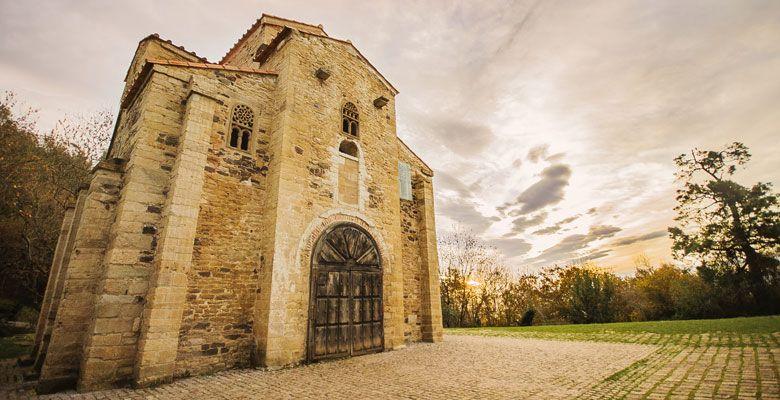
Well, eureka! That is precisely what San Miguel de Lillo is, a church, which until recently had a parish function.
San Miguel de Lillo is another survivor of the passing of time, and it is easy to imagine the courtly transit between the palace and the chapel, the whole atmosphere around the palace complex, which probably had other adjacent buildings that have not survived the passage of time.
San Miguel is another piece in this "unicum" of the Ramirense cycle that will leave you perplexed by its simplicity, its sobriety and its timeless elegance.
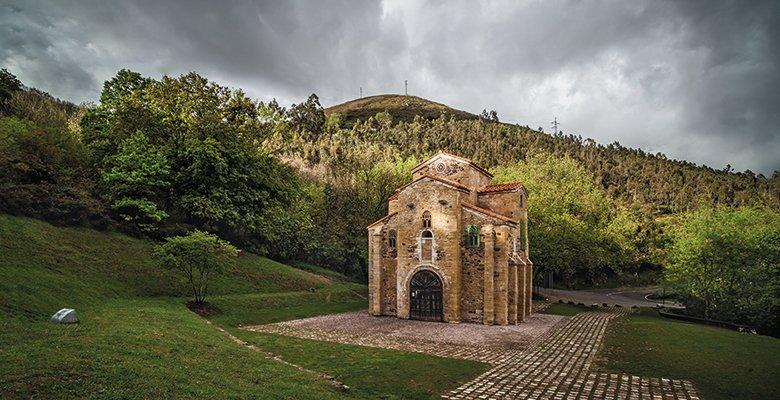
Just a few metres from Santa María del Naranco, you will find this other pre-Romanesque jewel!
Santa Cristina, small, gallant and with thousand corners
Santa Cristina de Lena completes the magical triangle of the Ramirense cycle. It is the third jewel of the Crown, and although its history is quite unknown and poorly documented, its stones are very expressive.
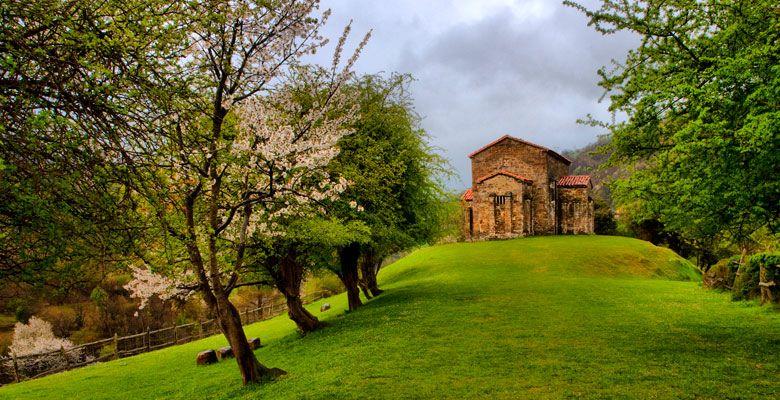
Santa Cristina captivates us at a glance. It is so flirtatious, so discreet, standing on a promontory that dominates the whole valley, it seems to be an eternal guide and watchtower.
Santa Cristina is in the council of Lena, 35 kilometres south of Oviedo/Uviéu. It is quite far from the other two, at least if we think of the 9th century. Its dedication is unique in Asturias, which is another of its "oddities".
Perhaps there may be a palace in the surrounding area, as there is a nearby place name called Palacio. Nearby are the Roman ruins of Memorana. Perhaps it was built over an ancient Visigoth temple.
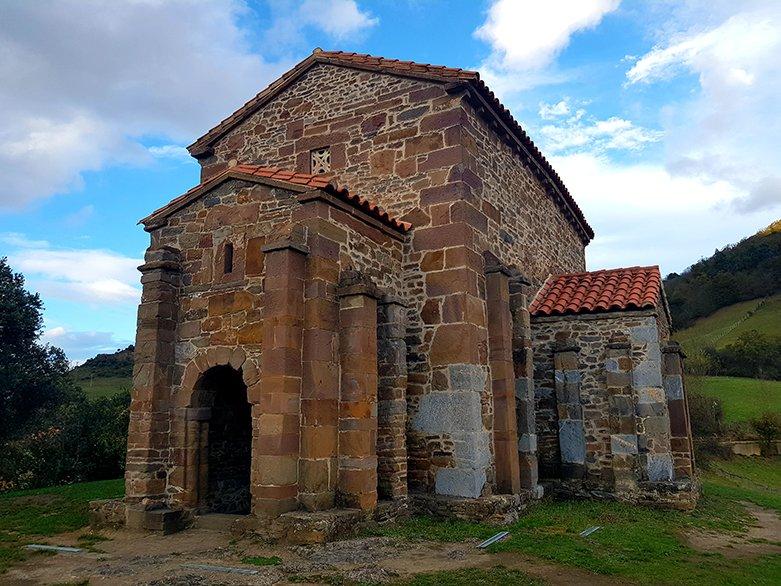
As you can see, Santa Cristina is surrounded by conjectures and hypotheses, with an aura of mystery and immense humanity. Its multiple angles or its "thousand corners", as it is popularly called, and the beauty of its iconostasis (three stone arches inside) make it a true pre-Romanesque legend, and without doubt another survivor of the old Kingdom of Asturias.
It could be said that it is small and gallant, like the Virgin of Covadonga...
Your pre-Romanesque journey is impressive, isn't it?
You have seen three constructions that are modest and full of magnificence at the same time. Humble but not poor, heirs of a rural and warrior society. Perfectly integrated in the environment, in the territory, in the landscape.
They are like three small bodies that enclose the grandiose soul of the Asturian Monarchy, and without them we could not understand this Kingdom. Perhaps that is why one day the Pre-Romanesque period fell in love with humanity for ever...
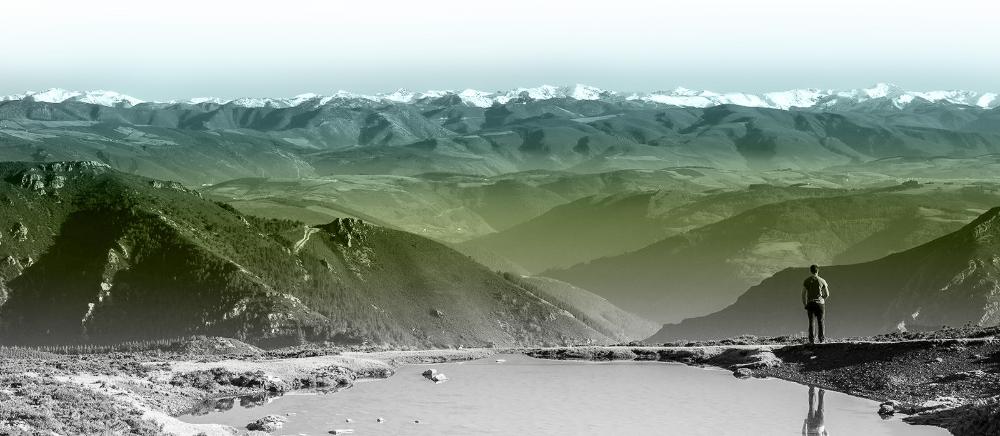
Subscribe to our newsletter and take advantage of offers, discounts, and news
Subscribe


